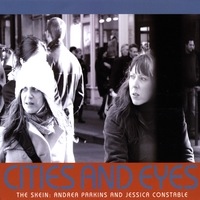My involvement with, and exploration of, electroacoustic music has increased exponentially in the past few months, and it is a lot of fun. I am finding that new tools of expression are helping me increase my understanding of the factors that make music compelling.
Right around the time I started getting serious about exploring electronic music on a deeper level, this disc showed up in my mailbox. Cities and Eyes by The Skein: Andrea Parkins and Jessica Constable is a a duo project that lists the performers’ instruments as: electric accordion, effects, samples and live processing, synthesizers, piano, voice, and electronics. Some of those are listed for both musicians. To my ears, this CD does a great job of taking sounds that we don’t normally associate with “songs,” and putting them in a context that has the vibe of “songs.”
If you are not sure how you feel about electronic music, check out Jon Appleton.
I have spent the last three nights at the LSU Festival of Contemporary Music. The guest composer was John Chowning. He is a wonderfully engaging man, and ridiculously smart. That is a great combination, and it was a real pleasure to get to spend some time with one of the pioneers of computer music.
One of the most interesting learning aspects of the weekend, for me, was getting to explore LSU’s ICAST surround sound system. For the FCM it was set up as 12 pairs of loudspeakers, plus a subwoofer. The speakers are set up in a way that allows stereo mixes to be presented in a variety of ways that remain true to the original stereo placement, but allow front/rear motion, and variation of the sound in relation to direct or reflected paths from the speakers to the ear. That is a somewhat simplified explanation, as there are many other possibilities with the system. The part that excited me, was that ICAST provides a performance aspect to the presentation of prerecorded music. This makes the concert experience very different from simply listening to the pieces on a nice stereo. Several students had the opportunity to diffuse (mix) a piece each night. It was a lot of fun, and thought provoking on several levels. Diffusing also gives me a bit of the performers rush that I get when playing. Over the three nights, I got to diffuse Love Song by Paul Rudy, Le Renard et La Rose by Robert Normandeau, and Fat Millie’s Lament by Kenneth Gaburo.


adding you to my blogroll
reciprocated.